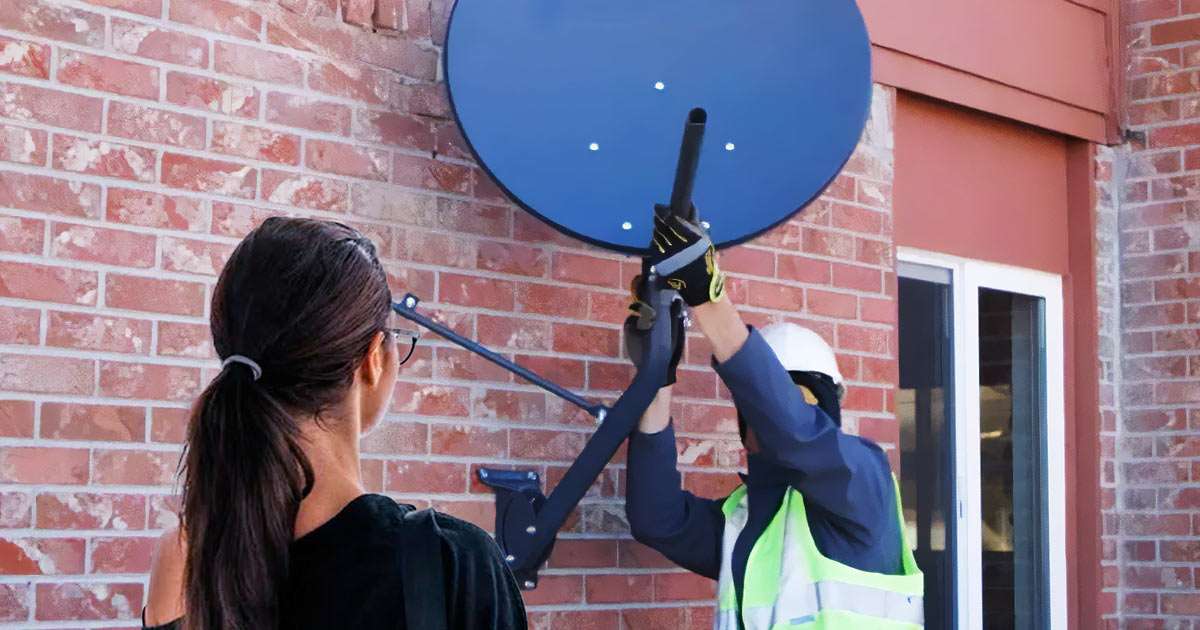Why is my Satellite Internet Slow? Guide on How to Make Satellite Internet Faster

In the modern world, internet access has transitioned from being a luxury to an indispensable part of society. As of 2023, there are approximately 5.3 billion internet users worldwide, representing around two-thirds of the global population. Fast and reliable internet access at home and at work has become an integral part of our lives, opening up a plethora of opportunities.
The internet has revolutionized how we apply for jobs, conduct research, learn new skills, and entertain ourselves. According to the Pew Research Center, 93% of American adults use the internet, underscoring its importance in day-to-day life. Furthermore, during the pandemic, nine out of ten Americans stated that the internet was essential or important to them.
However, access to the internet is not equally distributed, especially in remote or rural areas that cannot be reached by conventional terrestrial methods of internet connectivity. In such cases, satellite internet emerges as one of the best alternatives, providing essential connectivity to those far from urban centers.
Understanding Satellite Internet
Satellite internet is a type of high-speed internet connection that utilizes communication satellites in Earth’s orbit to provide internet connectivity. This method bypasses the need for traditional wired connections like broadband or dial-up, allowing it to reach even the most remote locations on Earth. As a result, satellite internet is an excellent choice for people who live in rural or remote areas where other forms of internet connectivity are unavailable.
In a typical setup, a satellite internet system involves three primary components: a satellite in geostationary orbit (approximately 22,236 miles above Earth’s equator), a number of ground stations known as gateways, and a small antenna (dish) and modem at the user’s location. When you send a request (like clicking a link on a webpage), the signal travels from your dish to the satellite, then to a gateway, which sends the request to the internet. The response follows the same path back.
Despite the significant advantages of satellite internet—primarily its widespread availability—it does have its drawbacks. The most notable challenge is latency, or delay. Compared to terrestrial internet connections, satellite internet frequently has higher latency due to the enormous distance signals must travel from Earth to the satellite and back.
Factors Contributing to Slow Satellite Internet Connection
Internet speed is a crucial factor for a satisfactory online experience, and the same holds true for satellite internet. However, several factors can contribute to slow satellite internet connections, each of which presents its own set of challenges.
Weather Conditions
Severe weather conditions like heavy rain, snow, or high winds can interfere with the satellite signal as it travels through the Earth’s atmosphere, leading to slower speeds or a loss of connectivity.
Physical Obstructions
Buildings, trees, mountains, or any other physical obstructions that block the line of sight between the satellite dish and the satellite can weaken the signal strength or disrupt the connection.
Latency Due to Distance
The signal needs to travel a significant distance from your dish to the satellite in space and back. The greater this distance, the longer it takes for the signal to reach its destination, causing latency. This delay is particularly noticeable during real-time online activities like video calls or gaming.
Network Congestion
Just like any other type of internet connection, satellite internet can also be affected by network congestion. If too many users are trying to use the same bandwidth, it can slow down the connection speeds for everyone.
Hardware Issues
Problems with your satellite dish, modem, or the cables connecting them can also lead to slower speeds. Such problems can be avoided with routine inspections and maintenance.
Quality of the Satellite and its Technology
Not all satellites are created equal. The quality of the satellite, its technology, and its positioning can greatly impact the speed and reliability of your connection.
Internet Service Plan
The type of plan you have with your internet service provider (ISP) can also affect your speed. Some plans may have data caps that limit your high-speed data usage or ‘throttle’ your speeds during peak usage times.
Software Issues
Occasionally, the software on your device may be the issue rather than the physical connection. Issues like viruses or malware, outdated software, or running too many applications at once can all slow down your internet speeds.
Boosting Satellite Internet Signal Strength
Improving the signal strength of your satellite internet connection can greatly enhance your online experience. Here are some strategies you can use to boost your connection:
Position Your Satellite Dish Correctly
Make sure the satellite dish is mounted correctly and has a direct line of sight to the sky. Signal interference can be caused by obstructions such as mountains, trees, and buildings. If necessary, consider hiring a professional to install and align your dish for optimal reception.
Regular Maintenance of Hardware
One way to find and address any problems that might be slowing down your connection is to perform routine maintenance and checks on your modem, cables, and satellite dish. Maintaining a clean and debris-free dish is crucial because even tiny obstructions can reduce signal strength.
Choose a Suitable Internet Plan
Ensure that the internet plan you have meets your needs. Upgrading to a plan with a larger data allowance might be worthwhile if you routinely go over your allotted amount of data.
Manage Network Traffic
If possible, try to schedule heavy data usage activities during off-peak hours to avoid network congestion. In addition, you may want to use your router’s Quality of Service (QoS) settings to give priority to particular kinds of traffic.
Keep Your Devices Secure and Updated
Regularly update your device software and maintain good security practices to avoid slowing your connection due to viruses or malware.
Use a Wi-Fi Extender
If your Wi-Fi signal is weak in certain parts of your home, consider using a Wi-Fi extender to boost the signal strength.
Clearing Obstructions Around Your Satellite Dish
One effective way to boost your satellite internet signal is by removing any physical obstructions that might be blocking the line of sight between your satellite dish and the satellite. This includes shrubbery, trees, and other obstacles that are close to your dish.
Making Your Satellite Internet Experience Faster
Improving the quality of your satellite internet connection requires a few well-thought-out tactics. From ensuring optimal placement of your satellite dish and conducting regular equipment maintenance to choosing an appropriate internet plan and managing network traffic, each step contributes significantly to a better online experience.
To monitor your satellite internet signal strength, most Internet Service Providers (ISPs) provide tools on their websites or apps that display real-time data about your connection. Your modem or router may also have built-in indicators that reflect the strength of your signal. If you encounter difficulties, reaching out to your ISP’s customer service can be beneficial.
When faced with the question, “Why is my satellite internet so slow?” numerous factors could be at play. It is important to first understand the causes before you can apply the strategies provided in this guide.
In summary, while satellite internet presents unique challenges, it also provides invaluable connectivity in areas where other forms of internet access are limited or non-existent. With strategic measures and routine upkeep, you can boost your satellite internet signal strength and, as a result, enjoy a more seamless and faster internet connection.

